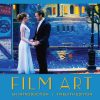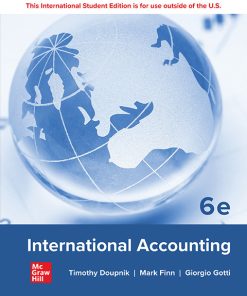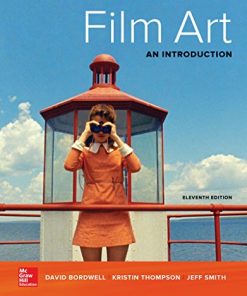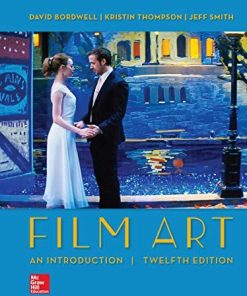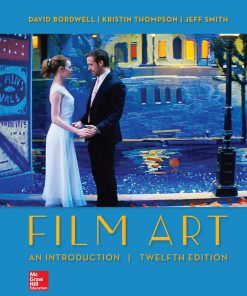Film Art An Introduction 13th Edition by David Bordwell 1264966622 9781264966622
$50.00 Original price was: $50.00.$25.00Current price is: $25.00.
Film Art: An Introduction 13th Edition by David Bordwell – Ebook PDF Instant Download/DeliveryISBN: 1264966622, 9781264966622
Full download Film Art: An Introduction 13th Edition after payment.
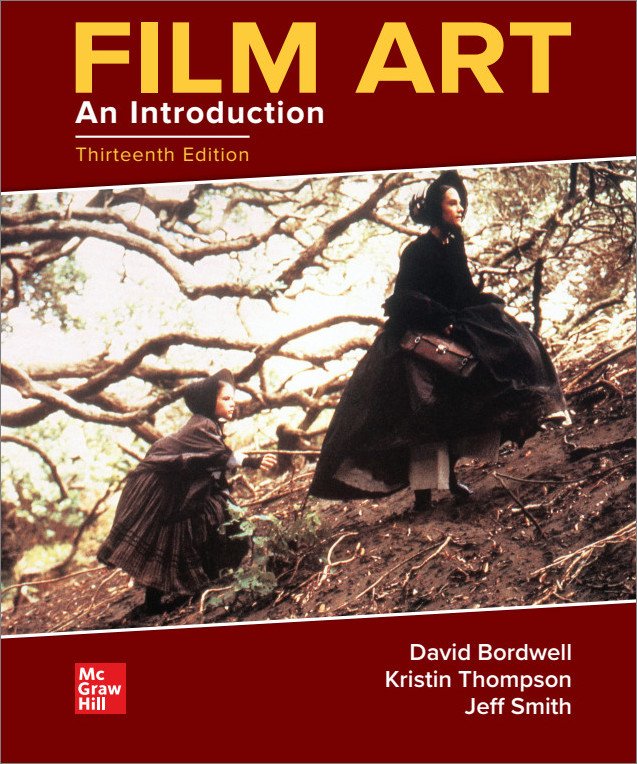
Product details:
ISBN-10 : 1264966622
ISBN-13 : 9781264966622
Author: David Bordwell
Film is an art form with a language and an aesthetic all its own. Since 1979, Film Art has been the best-selling and most widely respected introduction to the analysis of cinema. Taking a skills-centered approach supported by examples from many periods and countries, the authors help students develop a core set of analytical skills that will enrich their understanding of any film, in any genre. In-depth examples deepen students’ appreciation for how creative choices by filmmakers affect what viewers experience and how they respond. Film Art is generously illustrated with more than 1,000 frame enlargements taken directly from completed films, providing concrete illustrations of key concepts. Its Connect program includes invaluable tutorials featuring canonic film clips from the Criterion Collection. The thirteenth edition of Film Art includes extensively updated examples, and expanded coverage of digital filmmaking and the artistic and commercial implications of streaming.
Film Art: An Introduction 13th Table of contents:
Chapter 1: Film as Art: Creativity, Technology, and Business
Part 1 Introduction
Chapter 1 Introduction
Art versus Entertainment? Art versus Business?
Creative Decisions in Filmmaking
Mechanics of the Movies
Illusion Machines
Making Films with Photographic Film
Filmmaking with Digital Media
Making the Movie: Film Production
The Scriptwriting and Funding Phase
The Preparation Phase
The Shooting Phase
The Assembly Phase
Artistic Implications of the Production Process
Modes of Production
Large-Scale Production
Exploitation, Independent Production, and DIY
Small-Scale Production
Artistic Implications of Different Modes of Production
Bringing the Film to the Audience: Distribution and Exhibition
Distribution: The Center of Power
Exhibition: Theatrical and Nontheatrical
Ancillary Markets: Taking Movies beyond the Theater
Artistic Implications of Distribution and Exhibition
Screens and Sounds: Stylistic Opportunities and Challenges
Chapter 1 Summary
Chapter 2: The Significance of Film Form
Part 2 Introduction
Chapter 2 Introduction
The Concept of Form in Film
Form as Pattern
Form Versus Content
Formal Expectations
Conventions and Experience
Form and Feeling
Form and Meaning
Evaluation: Good, Bad, or Indifferent?
Principles of Film Form
Function
Similarity and Repetition
Difference and Variation
Development
Unity and Disunity
Chapter 2 Summary
Chapter 3: Narrative Form
Chapter 3 Introduction
Principles of Narrative Form
What Is Narrative?
Telling the Story
Plot and Story
Cause and Effect
Time
Space
Openings, Closings, and Patterns of Development
Narration: The Flow of Story Information
Range of Story Information: Restricted or Unrestricted?
Depth of Story Information: Objective or Subjective?
The Narrator
The Classical Hollywood Cinema
Narrative Form in Citizen Kane
Overall Narrative Expectations in Citizen Kane
Plot and Story in Citizen Kane
Citizen Kane’s Causality
Time in Citizen Kane
Motivation in Citizen Kane
Citizen Kane’s Parallelism
Patterns of Plot Development in Citizen Kane
Narration in Citizen Kane
Chapter 3 Summary
Chapter 4: The Shot: Mise-en-Scene
Part 3Introduction
Chapter 4 Introduction
What Is Mise-en-Scene?
The Power of Mise-en-Scene
Components of Mise-en-Scene
Setting
Costume and Makeup
Lighting
Staging: Movement and Performance
Putting It All Together: Mise-en-Scene in Space and Time
Space
Time
Narrative Functions of Mise-en-Scene in Our Hospitality
Chapter 4 Summary
Chapter 5: The Shot: Cinematography
Chapter 5 Introduction
The Photographic Image
The Range of Tonalities
Speed of Motion
Perspective
Framing
Frame Dimensions and Shape
Onscreen and Offscreen Space
Camera Position: Angle, Level, Height, and Distance of Framing
The Mobile Frame
Duration of the Image: The Long Take
Real Time Is … What?
Functions of the Long Take
The Long Take and the Mobile Frame
Chapter 5 Summary
Chapter 6: The Relation of Shot to Shot: Editing
Chapter 6 Introduction
What Is Editing?
Dimensions of Film Editing
Graphic Relations between Shot A and Shot B
Rhythmic Relations between Shot A and Shot B
Spatial Relations between Shot A and Shot B
Temporal Relations between Shot A and Shot B
Continuity Editing
Spatial Continuity: The 180° System
Continuity Editing in The Maltese Falcon
Continuity Editing: Some Fine Points
Crosscutting
Temporal Continuity: Order, Frequency, andDuration
Alternatives to Continuity Editing
Graphic and Rhythmic Possibilities
Spatial and Temporal Discontinuity
Chapter 6 Summary
Chapter 7: Sound in the Cinema
Chapter 7 Introduction
Sound Decisions
The Powers of Sound
Sound Shapes Our Understanding of Images
Guiding Our Eye and Mind
Fundamentals of Film Sound
What Do We Hear?
Recording, Altering, and Combining Sounds
Musical Motifs in Shang-Chi and the Ten Rings
Dimensions of Film Sound
Rhythm
Fidelity
Space
Sound Perspective
Time
Conversation Piece
Chapter 7 Summary
Chapter 8: Summary: Style and Film Form
Chapter 8 Introduction
The Concept of Style
Decision Making: Techniques Working Together
Watching and Listening: Style and the Viewer
Analyzing Style
1. What Is the Film’s Overall Form?
2. What Are the Main Techniques Being Used?
3. What Patterns Are Formed by the Techniques?
4. What Functions Do the Techniques and Patterns Fulfill?
Style in Citizen Kane
Mystery and the Penetration of Space
Style and Narration: Restriction and Objectivity
Style and Narration: Omniscience
Narrative Parallels: Settings
Parallels: Other Techniques
A Convincing Newsreel
Plot Time through Editing
Style and the Viewer’s Response
Chapter 8 Summary
Chapter 9: Film Genres
Part 4 Introduction
Chapter 9 Introduction
Understanding Genre
Defining a Genre
Analyzing a Genre
Genre History
The Social Functions of Genres
Four Genres
The Western
The Horror Film
The Musical
The Sports Film
Chapter 9 Summary
Chapter 10: Documentary, Experimental, and Animated Films
Chapter 10 Introduction
Documentary
What Is a Documentary?
The Boundaries between Documentary and Fiction
Genres of Documentary
Form in Documentary Films
Categorical Form: Introduction
An Example of Categorical Form: Gap-Toothed Women
Rhetorical Form: Introduction
An Example of Rhetorical Form: 13th
Experimental Film
A Range of Technical Choices
Types of Form in Experimental Films
Abstract Form: Introduction
An Example of Abstract Form: Ballet Mécanique
Associational Form: Introduction
An Example of Associational Form: Koyaanisqatsi
The Animated Film
Types of Traditional Animation
Types of Computer Animation
An Example of Traditional Animation: Duck Amuck
An Example of Experimental Animation: Dimensions of Dialogue
Chapter 10 Summary
Chapter 11: Film Criticism: Sample Analyses
Part 5 Introduction
Chapter 11 Introduction
The Classical Narrative Cinema
His Girl Friday
Do the Right Thing
Moonrise Kingdom
The Piano
Narrative Alternatives to Classical Filmmaking
Breathless (À Bout de souffle)
Tokyo Story (Tokyo Monogatari)
Chungking Express (Chung Hing sam lam)
Documentary Form and Style
Man with a Movie Camera (Chelovek s kinoapparatom)
The Thin Blue Line
Form, Style, and Ideology
Meet Me in St. Louis
Ali: Fear Eats the Soul
Chapter 12: Historical Changes in Film Art: Conventions and Choices, Tradition and Trends
Part 6 Introduction
Chapter 12 Introduction
Traditions and Movements in Film History
Early Cinema (1893–1903)
Photography and Cinema
Edison versus Lumière
Early Form and Style
Méliès, Magic, and Fictional Narrative
The Development of the Classical Hollywood Cinema (1908–1927)
Hollywood and the Studio System of Production
Classical Form and Style in Place
German Expressionism (1919–1926)
French Impressionism and Surrealism (1918–1930)
Impressionism
Surrealism
Soviet Montage (1924–1930)
Artists and the State
NEP Cinema
The Priority of Editing
The Movement Ends
The Classical Hollywood Cinema after the Coming of Sound (1926–1950)
Converting to Sound
Problems and Solutions
Studios, Genres, and Spectacle
Deep Focus and Narrative Innovations
Italian Neorealism (1942–1951)
Leaving the Studio
A New Model of Storytelling
The Movement’s End and Its Legacy
The French New Wave (1959–1964)
Critics Become Moviemakers
A New Wave Style
Neorealism Recast
Into the Mainstream and Beyond
The New Hollywood and Independent Filmmaking, 1970s–1980s
Blockbusters and Indie Pictures
The Rise of the Movie Brats
Other Paths
The 1980s and After
Hollywood and Independents, To Be Continued
Hong Kong Cinema, 1980s–1990s
A Local Tradition Goes Global
The New Generation: Two Schools
Story and Style
Legacy Overseas
Film Adaptations (CONNECT and CREATE only)
Film Adaptations
Adaptations Are Everywhere
Creative Choices in Adaptation
Adapation: Fidelity, Equivalents, and Transmedia Storytelling
Fidelity: How True to the Source?
Fidelity and Ideology
Film and Literature
Equivalents and Additions
Film and Theater
Films and Comics
Films and Television
Films and Music
Film and Games
Summary
Writing a Critical Analysis of a Film (CONNECT and CREATE only)
Writing a Critical Analysis of a Film
Preparing to Write
Organizing and Writing
Summary: Key Questions for an Analytical Essay
A Sample Analytical Essay
Additional Resources for “Film as Art: Creativity, Technology, and Business” (CONNECT and CREATE only)
Additional Resources for “Film as Art: Creativity, Technology, and Business”
Recommended DVD and Blu-ray Supplements
Related Books, Articles, and Websites
Additional Resources for “The Significance of Film Form”
Recommended DVD and Blu-ray Supplements
Related Books, Articles, and Websites
Additional Resources for “Narrative Form”
Recommended DVD and Blu-ray Supplements
Related Books, Articles, and Websites
Additional Resources for “Mise-en-Scene”
Recommended DVD and Blu-ray Supplements
Related Books, Articles, and Websites
Additional Resources for “The Shot: Cinematography”
Recommended DVD and Blu-ray Supplements
Related Books, Articles, and Websites
Additional Resources for “The Relation of Shot to Shot: Editing”
Recommended DVD and Blu-ray Supplements
Related Books, Articles, and Websites
Additional Resources for “Sound in Cinema”
Recommended DVD and Blu-ray Supplements
Related Books, Articles, and Websites
Additional Resources for “Summary: Style as a Formal System”
Recommended DVD and Blu-ray Supplements
Related Books, Articles, and Websites
Additional Resources for “Film Genres”
Recommended DVD and Blu-ray Supplements
Related Books, Articles, and Websites
Additional Resources for “Documentary, Experimental, and Animated Films”
Recommended DVD and Blu-ray Supplements
Related Books, Articles, and Websites
Additional Resources for “Film Criticism: Sample Analyses”
Recommended DVDs
Related Books, Articles, and Websites
Additional Resources for “Historical Changes in Film Art”
Recommended DVD and Blu-ray Discs
Related Books, Articles, and Websites
Additional Resources for “Film Adaptations”
Recommended DVD and Blu-ray Supplements
Related Books, Articles, and Websites
Recommended DVD and Blu-ray Supplements
People also search for Film Art: An Introduction 13th:
borrow film art an introduction
bordwell and thompson film art an introduction
film art an introduction 14th edition
film art an introduction 10th edition
film art an introduction 13th edition amazon
Tags: Film Art, Introduction, David Bordwell, language, aesthetic, analytical skills
You may also like…
History & Research
Business & Economics - Accounting
International Accounting 6th Edition by Timothy Doupnik 1266386275 9781266386275
Politics & Philosophy - Social Sciences
Population: An Introduction to Concepts and Issues 13th Edition John R. Weeks
History & Research
Arts - Film



